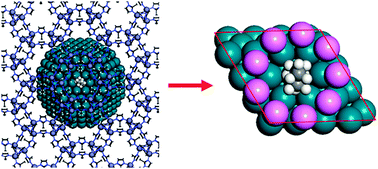A modelling approach for MOF-encapsulated metal catalysts and application to n-butane oxidation†
Abstract
Metal nanoparticles (NP) encapsulated by metal–organic frameworks (MOFs) are novel composite materials that have shown promise as regioselective catalysts. The regioselectivity in these materials arises from steric constraints imposed by the porous MOF structure, which limit the way molecules approach and interact with the metal surface. Here we introduce a conceptually simple DFT approach to model reactions under such steric constraints. This approach is computationally efficient and accounts for the steric constraints imposed by a MOF pore in a general way. The adsorption of reactants, intermediates, and products associated with oxidation of n-butane to 1-butanol (and 2-butanol) on clean and oxygen-covered palladium surfaces is investigated with (and without) the constraints of a pore. Reaction energies are calculated, and we find that the thermodynamic favorability of the intermediate reactions is affected by the presence of steric constraints, oxygen coverage, and the exposed crystal surface of the metal. Based on these results, the Pd(111) surface with 0.25 ML oxygen coverage and steric constraints (which could be provided by a suitable MOF) seems promising to favor the desired sequence of reactions that would lead to the conversion of n-butane to 1-butanol.


 Please wait while we load your content...
Please wait while we load your content...